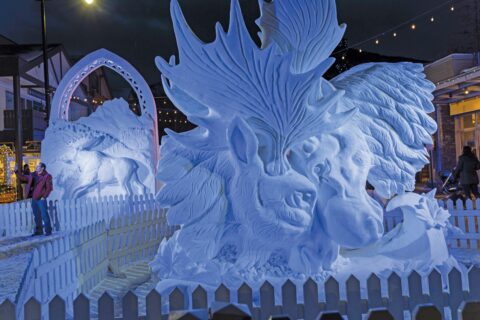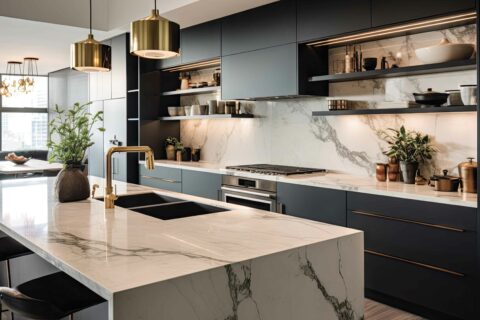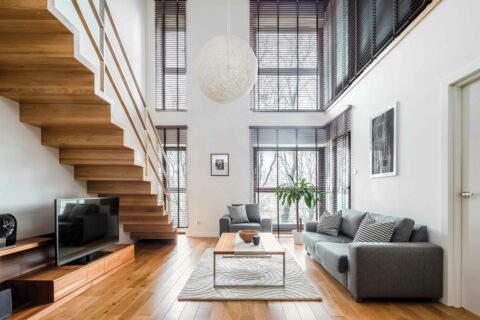Living in Banff National Park is a unique privilege. The Town of Banff wasn’t officially incorporated until 1990, when it was the first municipality to incorporate inside of a National Park in Canada. Banff is also the highest town in Canada, with an elevation of 1,383 metres. The townsite covers 3.93 square kilometers and its boundaries are fixed by federal law. This means the town cannot expand to accommodate new homes, which prevents the adverse effects of urban sprawl on the surrounding National Park. As such, Banff restricts its residents with a Need to Reside policy, which prohibits second homes and vacation properties. The closeness to nature and connection to the community are just some of the highlights of living in Banff.
The municipality itself is split in two by the Bow River. On the north side of the river, you’ll find the iconic downtown core, but also residential areas and heritage homes, making this area of Banff an interesting melting pot of work and play, transient and settled, all with a mountain adventure setting.
Most people driving into the townsite from the north end casually pass hotels as they reach the downtown core, completely missing the industrial area tucked between Banff Ave and the Trans-Canada Highway. This area is crucial for locals and has many amenities for residents, including a bottle depot, office space, veterinarian, gyms and more. There can be quality commercial spaces for rent or sale in this area, which can provide local businesses a place to work while getting some respite from the busy tourist areas downtown.
While busy Banff Ave is filled with hotels, shops and commercial tourism businesses, just off to either side of the main street is housing for locals and temporary workers alike.
Between Banff Ave and the Trans-Canada Highway, housing consists of apartment-style condos, townhomes and single-family homes. Many of the buildings in this area were constructed during the 1940-1970s era of expansion in the town, and they feature lower profiles with steep roofs and open-concept interiors. These homes are often separated into multiple apartments and used as staff accommodation during the busy tourist seasons. There are some options for redevelopment on these lots, so a savvy investor might find an opportunity by building multiplexes with updated interiors and room for common living spaces.
Further south, Whiskey Creek has a mixture of family homes and townhomes. It borders on Banff Elementary School and the surrounding neighbourhood, which is dominated by single detached homes, often occupied by year-round locals raising families within the National Park. Also in this area is the Job Resource Centre, the local grocery store, the Banff Public Library and several other non-tourism related businesses. Homes in this area follow the 1970’s style, but many have recent upgrades and beautiful modern interiors.
On the other side of Banff Ave, single family homes and apartment-style condos stretch up the side of Tunnel Mountain. The high school separates the main street from these homes, with the large field doubling as a public skating rink in the winter. Many of the homes in this area follow the 1940-1970’s styling, with numerous heritage homes sprinkled throughout. Some of the earlier architecture homes date back to the late 1800’s, with an emphasis on Prairie Craftmanship, which is defined by simple, rustic appearances. In the early 1900’s, homes were influenced by both American Rustic and English Revivalist architecture, creating a unique style known as Tudor Rustic.
Along the Bow River itself, large, extravagant homes overlook the scenery, providing a stunning combination of luxury and mountain views. It’s rare that these homes come up for sale, but when they do, they’re a paradise for someone looking for that special place in Banff.
Across the Bow River are a mixture of newer neighbourhoods and iconic heritage classics. Find out more about these neighbourhoods in the next issue of Mountain Real Estate.



